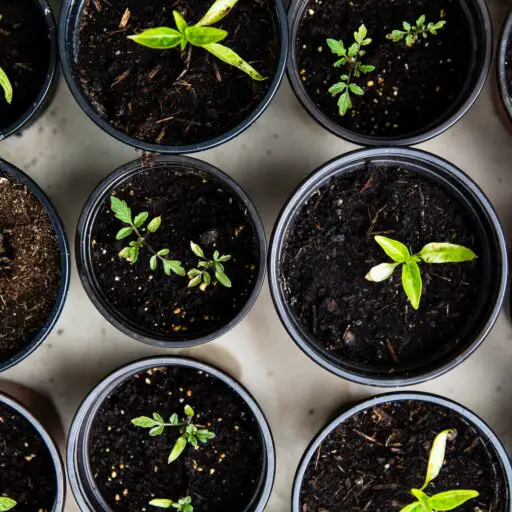Support our educational content for free when you purchase through links on our site. Learn more
Have you ever walked past a vacant lot in your neighborhood and thought, “That could be a beautiful garden!”? You’re not alone! Many communities are discovering the transformative power of gardening together, turning underutilized spaces into lush havens of fresh produce and vibrant flowers. In this guide, we’ll explore 10 essential tips for starting a community garden that not only beautifies your neighborhood but also fosters connections among residents. Did you know that community gardens can increase access to fresh food by up to 40% in urban areas? 🌍✨
In this article, we’ll cover everything from choosing the right location to overcoming common challenges, ensuring you have all the tools you need to cultivate a thriving garden. Plus, we’ll share inspiring anecdotes from successful community gardeners who have turned their dreams into reality. So, let’s dig in and uncover the secrets to starting your community garden!
Key Takeaways 🌼
- Start small and gradually expand your garden as your community gains experience.
- Choose a location with good sunlight, water access, and fertile soil for optimal growth.
- Build a strong team of passionate individuals to share responsibilities and ideas.
- Engage your community through workshops and events to gather input and build excitement.
- Seek funding and resources from grants, donations, and local businesses to support your garden.
Ready to kickstart your gardening journey? Shop Gardening Tools on Amazon | Explore Gardening Books on Amazon | Shop Raised Garden Beds on Amazon! 🌿
Table of Contents
- Quick Tips and Facts for Starting a Community Garden
- The Roots of Community Gardening: A Brief History
- What is Community Gardening and Why Does It Matter?
- Different Types of Community Gardens: Find Your Fit
- Planning Your Community Garden: Tips for Success
- Step-by-Step Guide to Kickstart Your Community Garden
- Common Challenges in Community Gardening and How to Overcome Them
- Effective Management Strategies for Community Gardens
- Weighing the Pros & Cons of Community Gardening
- The Bottom Line: Is Community Gardening Right for You?
- Conclusion
- Recommended Links for Further Exploration
- Frequently Asked Questions About Community Gardening
- Reference Links for Community Gardening Resources
Quick Tips and Facts for Starting a Community Garden 🌱
Starting a community garden is a rewarding endeavor, but it requires careful planning and community involvement. Here are some quick tips and facts to get you started:
Quick Tips:
- Start small: Begin with a manageable plot size and gradually expand as your community gains experience.
- Choose the right location: Select a site with good sunlight, access to water, and fertile soil.
- Build a strong team: Recruit passionate individuals with diverse skills and perspectives.
- Engage your community: Host meetings, workshops, and events to gather input and build excitement.
- Seek funding and resources: Explore grants, sponsorships, and donations to support your garden.
Facts:
- Community gardens can increase access to fresh, healthy food, particularly in underserved areas. Source: American Community Gardening Association
- Gardening can promote physical activity, reduce stress, and improve mental well-being. Source: American Horticultural Therapy Association
- Community gardens can enhance biodiversity, support pollinators, and promote sustainable practices. Source: The Xerces Society
The Roots of Community Gardening: A Brief History 🌳

Community gardening has a rich history dating back centuries. Let’s delve into its origins:
- Ancient Roots: Early forms of community gardening can be traced back to ancient civilizations, where people shared land and resources to grow food.
- Victory Gardens: During World War I and II, Victory Gardens sprouted up in homes, schools, and public spaces, encouraging citizens to grow their own food and support the war effort.
- Urban Renewal: In the mid-20th century, community gardens emerged as a response to urban decay and food insecurity, transforming vacant lots into vibrant green spaces.
- Modern Movement: Today, community gardening continues to flourish, driven by a growing interest in sustainability, local food systems, and community building.
What is Community Gardening and Why Does It Matter? 🌻
Community gardening is more than just growing food together—it’s about cultivating connections, fostering sustainability, and enhancing well-being. Here’s why it matters:
What is Community Gardening?
Community gardening involves transforming shared spaces—vacant lots, schoolyards, or rooftops—into thriving gardens where people come together to grow food, flowers, or herbs. It’s a collaborative effort, often guided by shared values of sustainability, community engagement, and access to fresh, healthy food.
Why Does It Matter?
- Food Security: Community gardens can increase access to affordable, nutritious food, especially in areas where grocery stores are scarce or unaffordable.
- Community Building: These gardens serve as vibrant hubs where people from all walks of life can connect, share knowledge, and build relationships.
- Health and Well-being: Gardening provides opportunities for physical activity, stress reduction, and exposure to nature, all of which contribute to improved health and well-being.
- Environmental Stewardship: Community gardens can promote biodiversity, conserve water, reduce waste, and educate people about sustainable practices.
- Education and Empowerment: These gardens offer hands-on learning experiences for people of all ages, fostering a deeper understanding of food systems, nutrition, and environmental stewardship.
For creative strategies to boost your community food growth, check out our article on How to Supercharge Community Food Growth: 13 Creative Strategies for 2024! 🌱.
Different Types of Community Gardens: Find Your Fit 🥕
Community gardens come in all shapes and sizes, each with its own unique focus and structure. Let’s explore some common types:
- Collective Gardens: Members share the workload and harvest equally, fostering a strong sense of community and shared responsibility.
- Allotment Gardens: Individuals or families rent plots within a larger garden, allowing for more independence and personalized gardening experiences.
- Charity Gardens: These gardens donate a portion or all of their harvest to local food banks or shelters, addressing food insecurity in their communities.
- School Gardens: Integrated into school curricula, these gardens provide hands-on learning experiences about plants, nutrition, and environmental science.
- Therapeutic Gardens: Designed to promote healing and well-being, these gardens offer a peaceful and restorative environment for individuals recovering from illness or trauma.
Planning Your Community Garden: Tips for Success 📝
Careful planning is crucial for creating a thriving and sustainable community garden. Here are some key tips to guide your efforts:
- Identify Your Goals: What do you hope to achieve with your community garden? Define your objectives early on to guide your decisions.
- Build a Strong Team: Assemble a diverse group of passionate individuals with a range of skills—organizing, fundraising, gardening, communication—to ensure a well-rounded approach.
- Find the Perfect Location: Consider factors like sunlight, water access, soil quality, accessibility, and community needs when selecting a site.
- Develop a Budget: Outline your estimated costs for materials, tools, seeds, water, insurance, and other expenses. Explore funding options like grants, donations, or sponsorships.
- Create a Garden Plan: Determine the layout of your garden, including plot sizes, pathways, communal areas, and any desired features like raised beds, trellises, or seating areas.
- Establish Clear Guidelines: Develop a set of rules and guidelines regarding plot allocation, water usage, maintenance responsibilities, and conflict resolution to ensure smooth operation.
Step-by-Step Guide to Kickstart Your Community Garden 🚀
Ready to turn your community garden dreams into reality? Follow these steps to get started:
- Gather Community Support: Host meetings, workshops, or events to gauge interest, gather input, and recruit volunteers.
- Secure a Location: Identify potential sites and contact landowners or local authorities to inquire about availability and permits.
- Develop a Plan and Budget: Outline your garden’s goals, design, budget, and timeline.
- Seek Funding and Resources: Explore grants, sponsorships, crowdfunding, or in-kind donations to support your project.
- Prepare the Site: Clear the land, build raised beds if desired, amend the soil, and install irrigation systems.
- Plant with Purpose: Choose a variety of crops that thrive in your climate and align with your community’s needs and preferences.
- Celebrate Your Success: Host a grand opening event to showcase your garden, build excitement, and foster a sense of community ownership.
Common Challenges in Community Gardening and How to Overcome Them 🚧
Like any worthwhile endeavor, community gardening comes with its share of challenges. Let’s explore some common obstacles and strategies to overcome them:
Challenge: Lack of Participation or Engagement
Solution: Foster a welcoming and inclusive environment, host regular events, create opportunities for leadership, and celebrate successes to keep members motivated and involved.
Challenge: Pests, Diseases, or Weeds
Solution: Implement integrated pest management strategies, encourage crop rotation, promote soil health, and provide educational resources to prevent and address these issues.
Challenge: Funding or Resource Constraints
Solution: Explore creative fundraising options, seek grants or sponsorships, partner with local businesses, and encourage in-kind donations of materials or expertise.
Challenge: Conflict Resolution
Solution: Establish clear communication channels, develop a conflict resolution process, and foster a culture of respect and understanding to address disagreements effectively.
Effective Management Strategies for Community Gardens 🧑🌾
A well-managed community garden is more likely to thrive and achieve its goals. Here are some effective management strategies:
- Establish Clear Roles and Responsibilities: Assign specific tasks to individuals or committees to ensure accountability and efficient operation.
- Develop a Communication Plan: Utilize email, newsletters, social media, or bulletin boards to keep members informed about meetings, events, and important updates.
- Implement a Decision-Making Process: Establish a transparent and inclusive process for making decisions that affect the entire garden community.
- Track Your Progress and Impact: Collect data on harvests, volunteer hours, community engagement, and other metrics to measure your success and identify areas for improvement.
- Celebrate Achievements and Learn from Challenges: Acknowledge and appreciate the hard work of your volunteers, and use challenges as opportunities for growth and learning.
Weighing the Pros & Cons of Community Gardening 🤔
Before diving into community gardening, it’s essential to weigh the potential benefits and drawbacks to determine if it’s the right fit for you and your community.
Pros:
- Increased Access to Fresh Food: Community gardens can provide a source of affordable, nutritious produce, particularly in food deserts.
- Community Building: These gardens foster social connections, promote a sense of belonging, and strengthen community bonds.
- Health and Well-being: Gardening offers physical activity, stress reduction, and exposure to nature, all of which contribute to improved health.
- Environmental Benefits: Community gardens can enhance biodiversity, conserve water, reduce waste, and promote sustainable practices.
- Educational Opportunities: These gardens provide hands-on learning experiences about plants, food systems, and environmental stewardship.
Cons:
- Time Commitment: Gardening requires time and dedication, which may be a barrier for some individuals.
- Physical Demands: Gardening can involve physically demanding tasks, which may not be suitable for everyone.
- Potential for Conflict: Disagreements or conflicts may arise among members, requiring effective communication and conflict resolution strategies.
- Weather Dependence: Garden yields can be affected by weather events, which may lead to disappointment or frustration.
- Limited Growing Season: Depending on your climate, you may have a limited growing season, which can impact the availability of fresh produce.
The Bottom Line: Is Community Gardening Right for You? 🌱
Community gardening offers a multitude of benefits, from increasing access to fresh food to fostering community connections and promoting sustainability. However, it also requires dedication, collaboration, and a willingness to overcome challenges. If you’re passionate about gardening, connecting with your community, and making a positive impact, then community gardening might be the perfect fit for you!
Conclusion 🌼

In summary, community gardening is an enriching experience that not only provides access to fresh, healthy food but also fosters a sense of community, enhances well-being, and promotes sustainable practices. The journey involves collaboration, planning, and a commitment to overcoming challenges.
Positives:
- Increased food access for communities, especially in underserved areas.
- Social bonding and community engagement through shared efforts.
- Educational opportunities that empower individuals with gardening skills and knowledge.
- Environmental benefits that contribute to biodiversity and sustainability.
Negatives:
- Time commitment and physical demands that may deter some individuals.
- Potential conflicts among members that require effective management.
- Weather dependency and limited growing seasons that can affect yields.
Overall, if you’re passionate about gardening and community involvement, we confidently recommend diving into the world of community gardening! Your efforts can lead to a flourishing garden and a stronger, more connected community. 🌱✨
Recommended Links 🛒
- Community Gardening Essentials:
Frequently Asked Questions About Community Gardening ❓
Where is the best place to start a community garden?
The ideal location for a community garden is a vacant lot, park, or schoolyard that receives at least 6-8 hours of sunlight daily and has access to water. It should also be easily accessible to community members and free from contaminants in the soil. Before choosing a site, check local zoning laws and land ownership to ensure compliance.
How to begin a community garden?
To start a community garden, follow these steps:
- Gather community interest through meetings and outreach.
- Secure a location that meets your community’s needs.
- Develop a plan that outlines goals, budget, and layout.
- Engage local stakeholders for support, funding, and resources.
- Prepare the site and plant your garden, fostering collaboration among members.
What is a successful community garden?
A successful community garden is characterized by:
- Active participation from community members.
- Diverse and healthy plants that meet the needs of the community.
- Effective management with clear roles, responsibilities, and communication.
- Positive community impact, such as increased food access and social cohesion.
Where do I start when building a garden?
Begin by assessing your available space and determining what type of garden suits your needs (e.g., raised beds, container gardening). Next, plan your layout, considering sunlight, water access, and soil quality. After that, gather your materials, prepare the site, and choose plants that thrive in your climate and align with your goals.
How can I involve my community in the gardening process?
Engaging your community can be done through:
- Hosting workshops to teach gardening skills.
- Organizing events like planting days or harvest festivals.
- Creating a communication plan that keeps everyone informed and involved.
- Encouraging feedback and input from community members to ensure the garden meets their needs.
What are some tips for maintaining a community garden?
To maintain a successful community garden:
- Establish a watering schedule and assign responsibilities.
- Implement a weeding and pest management plan to keep the garden healthy.
- Host regular meetings to discuss progress, challenges, and community events.
- Celebrate successes and encourage community bonding through shared meals or harvest celebrations.
Reference Links 🔗
- American Community Gardening Association
- American Horticultural Therapy Association
- The Xerces Society
- How to Start a Community Garden | UMN CCAPS
- Public Gardens Association Grants
Dive into the world of community gardening, and let’s grow together! 🌿💚

